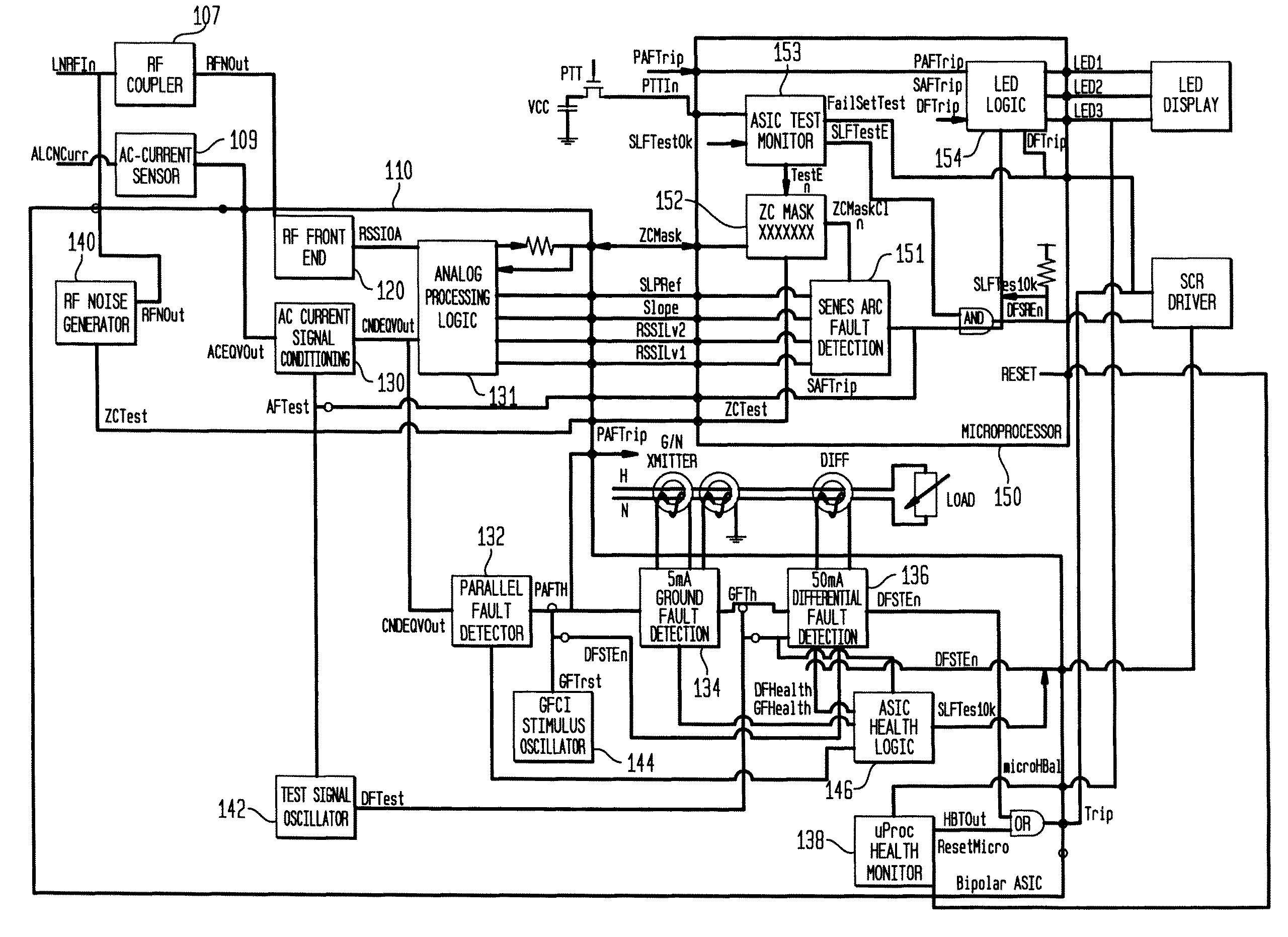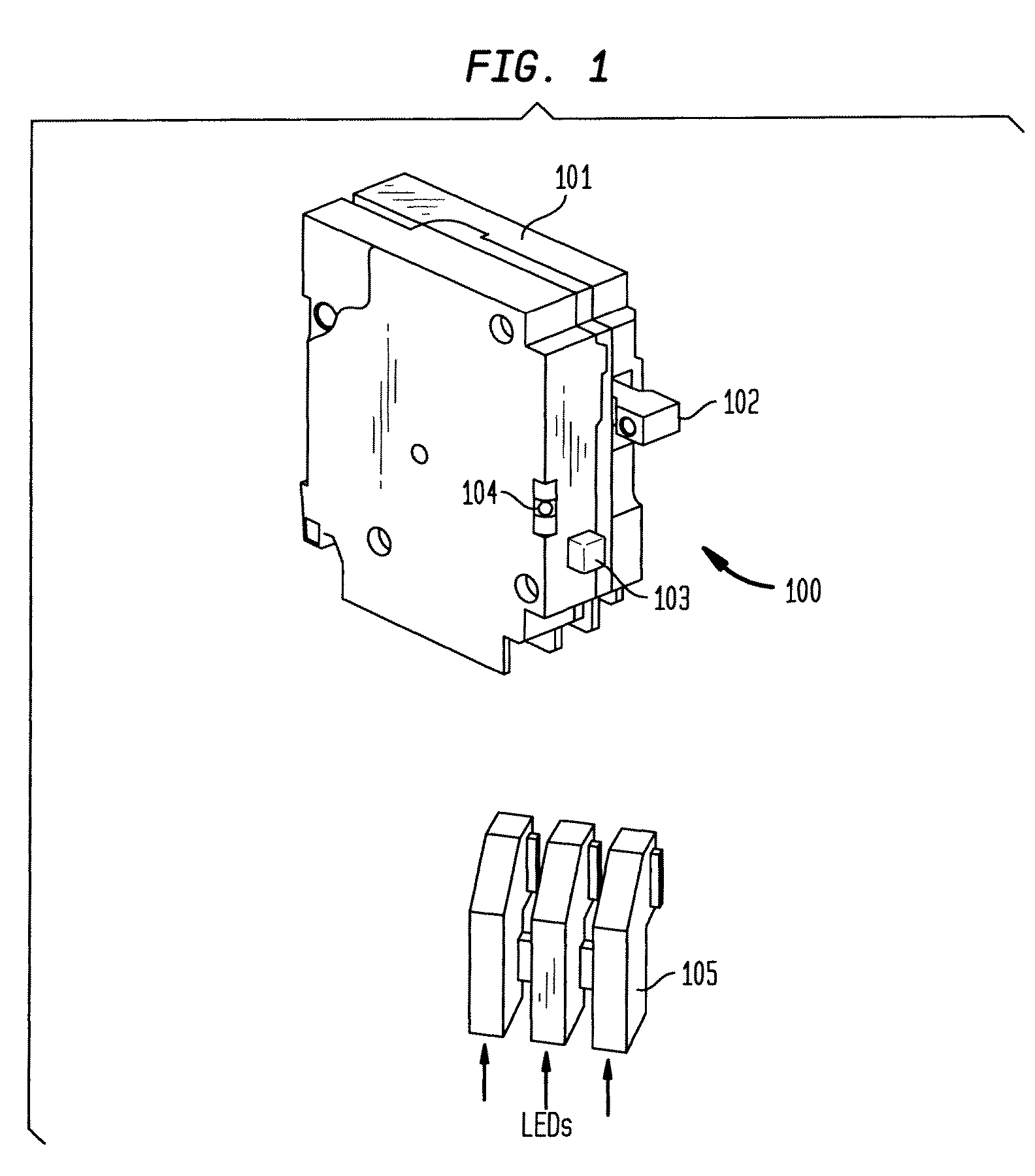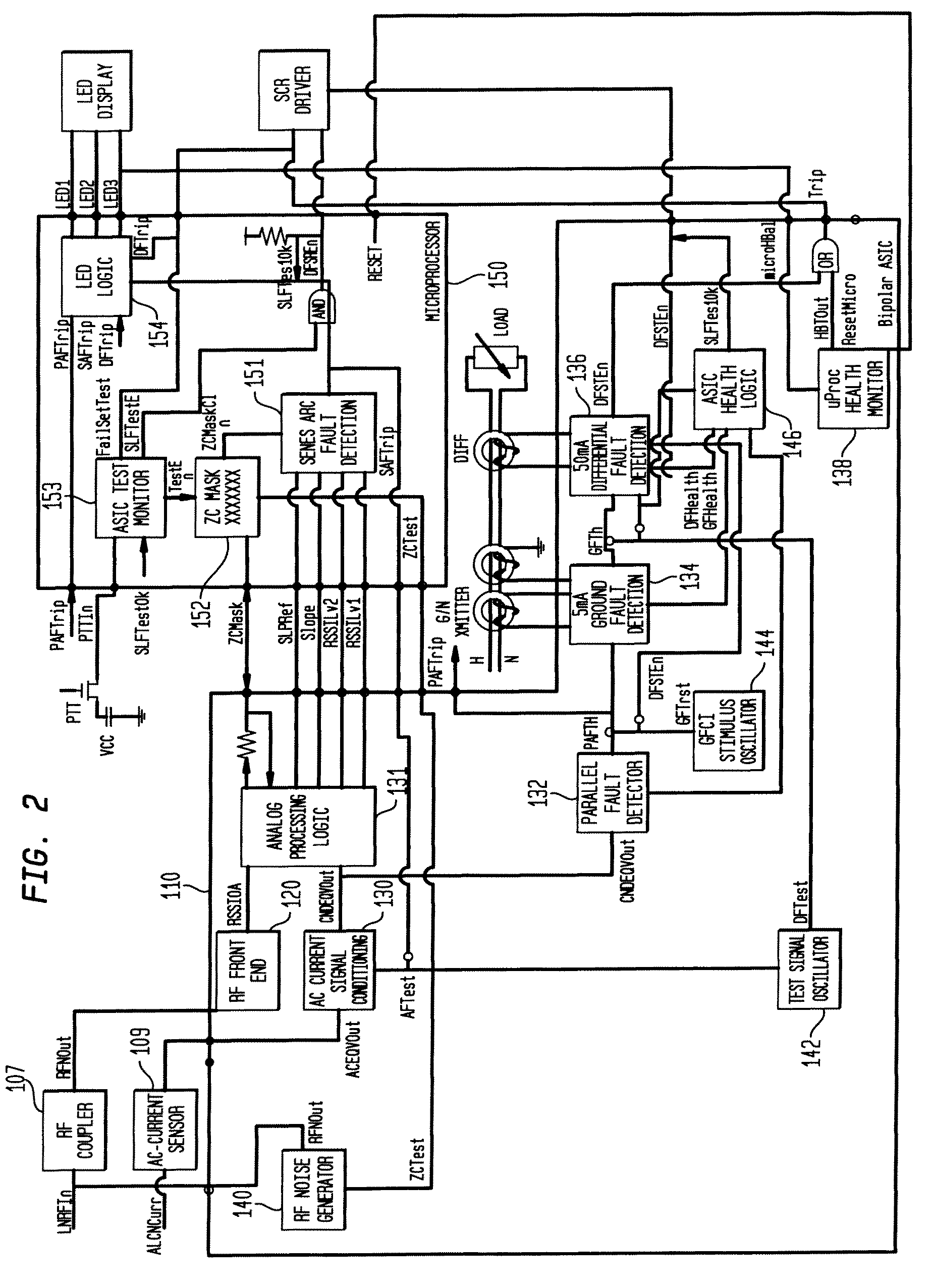Multifunctional residential circuit breaker
a multi-functional, residential technology, applied in emergency protective circuit arrangements, instruments, etc., can solve the problems of low-voltage arcing, a significant fire hazard, and a high probability of dangerous arcing in the home, so as to quickly and effectively discriminate arc faults
- Summary
- Abstract
- Description
- Claims
- Application Information
AI Technical Summary
Benefits of technology
Problems solved by technology
Method used
Image
Examples
Embodiment Construction
[0056]Reference will now be made in detail to the exemplary embodiments of this disclosure, examples of which are illustrated in the accompanying drawings. Wherever possible, the same reference numbers will be used throughout the drawings to refer to the same or like parts.
[0057]FIG. 1 provides a diagram of an exemplary arc fault circuit interrupting (AFCI) device 100. This device may be adapted for use in any residential and / or commercial power system environment and may be configured to detect arc faults, including both line-fault (i.e., parallel-type arcing between lines) and contact-fault (i.e., series-type arcing on the same line due to electrical discontinuity in the conductor) that may be present on a power circuit associated with the power system. Device 100 may also be configured to detect ground faults occurring on or otherwise associated with a power distribution circuit. It is contemplated that device 100 may include one or more circuits and subsystems for implementing p...
PUM
 Login to View More
Login to View More Abstract
Description
Claims
Application Information
 Login to View More
Login to View More - R&D
- Intellectual Property
- Life Sciences
- Materials
- Tech Scout
- Unparalleled Data Quality
- Higher Quality Content
- 60% Fewer Hallucinations
Browse by: Latest US Patents, China's latest patents, Technical Efficacy Thesaurus, Application Domain, Technology Topic, Popular Technical Reports.
© 2025 PatSnap. All rights reserved.Legal|Privacy policy|Modern Slavery Act Transparency Statement|Sitemap|About US| Contact US: help@patsnap.com



